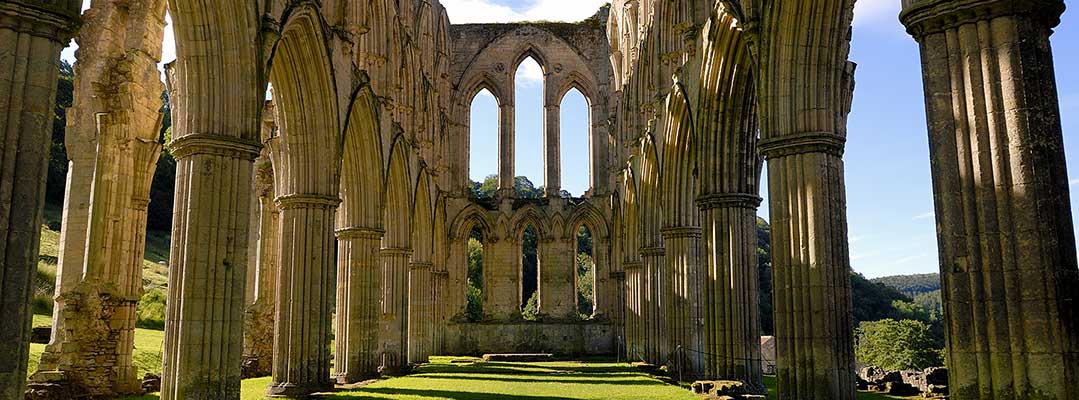How the Medieval Era Shaped Sacred Buildings

If you’ve ever stepped into a grand cathedral and felt your blood rushing in awe of the architecture, you’re experiencing firsthand the impact of medieval architecture. The Middle Ages were a defining period for sacred buildings, shaping the way we experience places of worship even today. From towering Gothic cathedrals pictured in Figure 2 to peaceful monasteries, medieval architecture was deeply intertwined with faith, community, and innovation.
Monasteries weren’t just places of worship, they were completely self-sufficient communities. When I first learned about medieval monastic life, I was fascinated by how carefully planned these spaces were. Each section of a monastery had a clear purpose, from the peaceful, open-air walkways to the scriptoriums where they copied manuscripts.

As School History puts it, "A monastery is a complex of buildings where a religious community of monks or nuns lives” (School History Editors, 2020). These weren’t just places for prayer, they were hubs of learning, agriculture, and even healthcare. The architecture was a reflection of this, monasteries were designed to support a way of life which was devotion and daily work.
Medieval religious architecture went through a massive transformation over the centuries. In the early medieval period, churches and cathedrals were built in the Romanesque style, think thick walls, small windows, and rounded arches, an example of this is Figure 3. This style gave way to the dramatic style of Gothic architecture, which introduced pointed arches, flying buttresses, and stained glass windows that gave the interiors colorful light.
English Heritage highlights this by stating, "The medieval period saw the construction of some of England’s most iconic religious buildings, reflecting the deep-rooted Christian faith of the time." These structures weren’t just about aesthetics, they were designed to inspire worshippers and draw their eyes upward in hope that they give their hearts to God.
Roger Stalley’s Early Medieval Architecture dives deep into the symbolism of medieval religious buildings. He explains that these churches and monasteries weren’t just about being grand, they were actually designed to embody divine presence. From stone carvings to the way light filtered through stained glass, everything was meant to evoke a sense of sacredness.
I love how intentional medieval architects were. Every design choice had meaning, nothing was random. It’s a reminder that sacred spaces aren’t just functional, they carry stories, beliefs, and aspirations in their walls.
Even today, medieval influences are everywhere in religious architecture. Many modern churches and cathedrals borrow elements from Gothic and Romanesque styles, from vaulted ceilings to rose windows. “From the Gothic style of the Middle Ages to the design of new religious buildings, the influence of medieval architecture is evident” (Weinberger Editors, 2019). This proves that the principles of medieval sacred spaces, grandess, symbolism, and function are timeless.
The medieval era may be long gone, but its architectural legacy continues to shape how we design and experience sacred spaces today. So next time you visit a grand church or even see a modern building with pointed arches or intricate carvings, take a moment to appreciate the medieval minds that laid the foundation for these awe-inspiring designs
Sources:
English Heritage Editors. (n.d.). Medieval architecture. English Heritage. https://www.english-heritage.org.uk/learn/story-of-england/medieval/architecture/
School History Editors. (2020, March 25). Medieval monasteries: Facts, types, Architecture & functions. School History. https://schoolhistory.co.uk/notes/medieval-monasteries/
Stalley, R. (1999). Early medieval architecture / Roger Stalley. Oxford University Press.
Weinburger Editors. (2019, May 7). Cultural and religious projects. United Kingdom. https://www.wienerberger.co.uk/reference-projects/commercial-buildings/cultural-and-religious.html#:~:text=From%20the%20Gothic%20style%20of,the%20design%20new%20religious%20buildings
Lecture - Gothic & Medieval Architecture
List of Figures:
Figure 1 - English Heritage. (n.d.). Rievaulx Abbey: History and Stories. English Heritage. https://www.english-heritage.org.uk/visit/places/rievaulx-abbey/history-and-stories/history/
Figure 2 - Medieval Brick. (n.d.). [Photograph]. In 10 medieval Gothic cathedrals in the world. Medieval Brick. https://www.medievalbrick.com/blog/medieval-history/10-medieval-gothic-cathedrals-in-the-world/
Figure 3 - Paradox Place. (n.d.). Facade of Notre-Dame la Grande, Poitiers [Photograph]. Durham World Heritage Site. https://www.durhamworldheritagesite.com/architecture/romanesque/display/poitiers-facade




